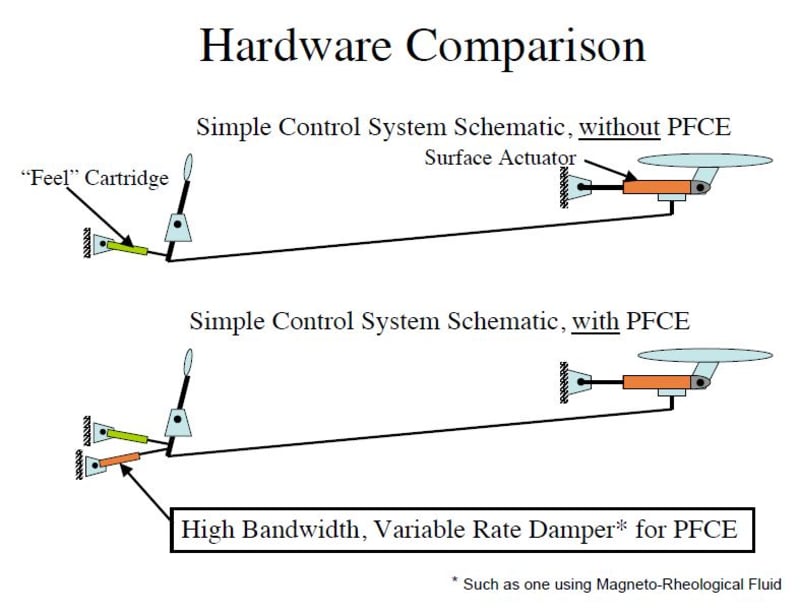Primary Flight Control Enhancement (PFCE)
The flight control systems of commercial aircraft in production today are a mind-boggling combination of redundant hardware, and complex software designed to meet the levels of reliability and performance required by the FAA, and to conform to the industry's “best practices,” to stay competitive. However, in spite of all of the complexity and sophistication of today’s flight controls, the number one fatal accident category for the worldwide commercial jet fleet remains loss-of-control (LOC), accounting for 32.2% of the fatal accidents, and 36.8% of the fatalities for 2001 through 2010 (Boeing 2010 Statistical Summary, June 2011, page 22).
The “feel” produced by the cockpit controls provides the pilot with only control “feel” consistent with the design control surface response. Deterioration of the flight controls is NOT reflected through the cockpit control ‘feel.” Restricted surface motion, such as caused by icing or mechanical binding would not be reflected in the cockpit control feel. The benefits of an active-adaptive feel system, which provides feedback alerting the pilot to control problems, is proposed.
PFCE will provide a restraining force on the cockpit controls proportional to the distortion of the pilot’s control input to control surface output. Distortion is the difference between the measured control surface response, and the modeled surface response, and is a function of both synchronizion (phase), and amplitude (gain) relative to the pilot’s input. The goal of the PFCE feedback is to alert the pilot of anomalous behavior of his flight control system, and to help guide his control inputs to fully utilize his degraded system to maintain controlled flight, and to inhibit LOC.
A diagram of a control system with, and without PFCE is depicted in Figure 1. Without PFCE, the spring-damper cartridge provides the pilot’s feel. With PFCE, the addition of a relatively high bandwidth, variable rate damper generates tactile feedback proportional to the measured distortion.
Figure 2 is a notional mapping of the force generated by both the basic feel cartridge and the PFCE damper as a function of distortion. The force gradient for zero distortion reflects the output of the basic feel cartridge. The increase in the control force gradients of PFCE are to help the pilot operate within the capabilities of his control system, and to be alerted by situations that will cause a degradation in the controlability of his aircraft.
Figure 3 exemplifies the more disciplined input-output relationship with the application of PFCE, and communicates the vision of intended results.
PFCE should be an integral part of all manned military and commercial aircraft, with cost and life saving payoff.
The PFCE variable damper design is consistent with currently available variable-rate dampers.
The PFCE flight control model is identical with a steady-state version the final dynamic flight control model evolved during the aircraft design, and proven in flight tests. For actual piloting control inputs, the difference between the actual surface response and the model surface response defines the distortion used in PFCE.
Like this entry?
-
About the Entrant
- Name:Ralph A'harrah
- Type of entry:individual
- Software used for this entry:Ground based and in-flight simulation
- Patent status:patented








